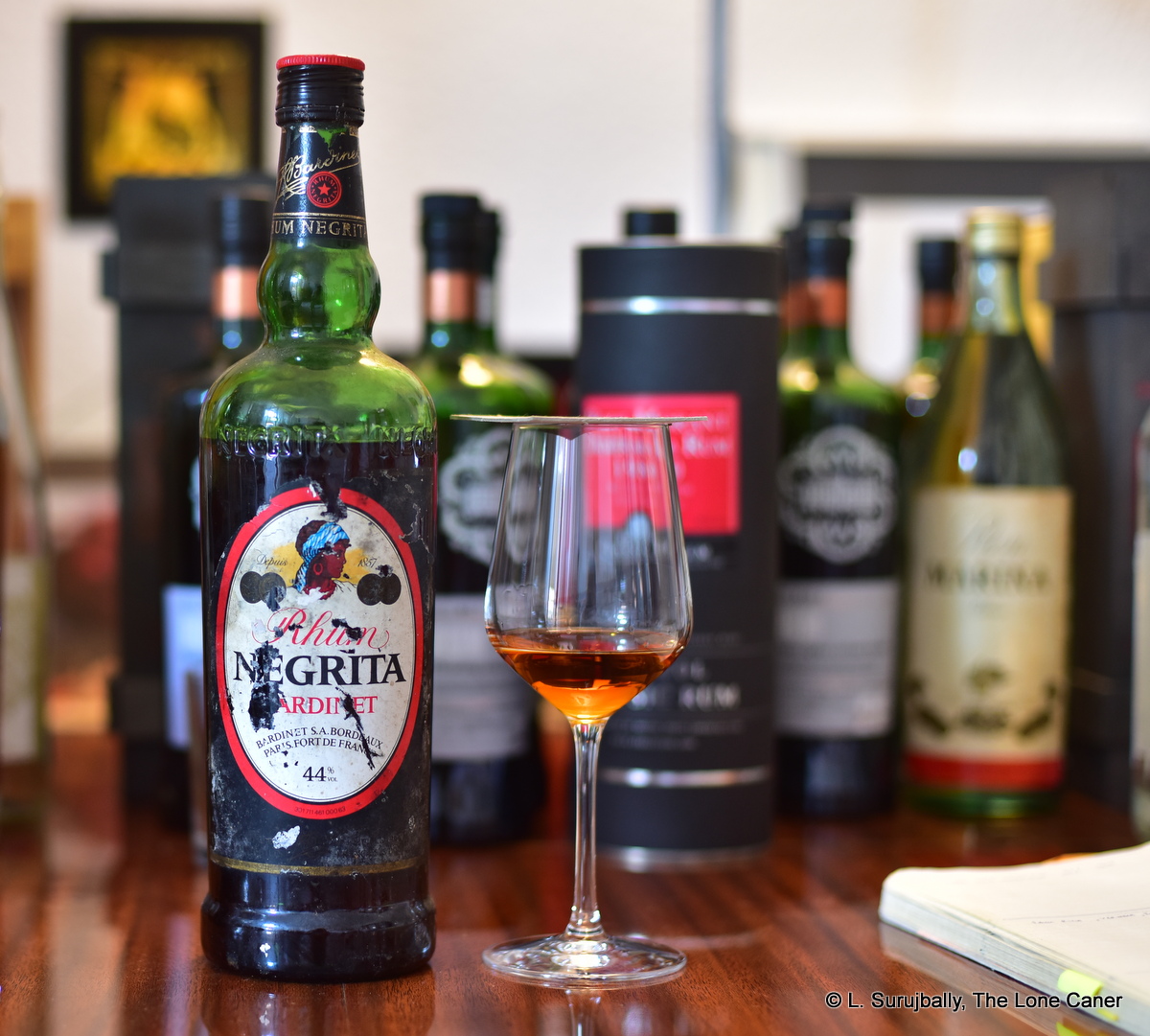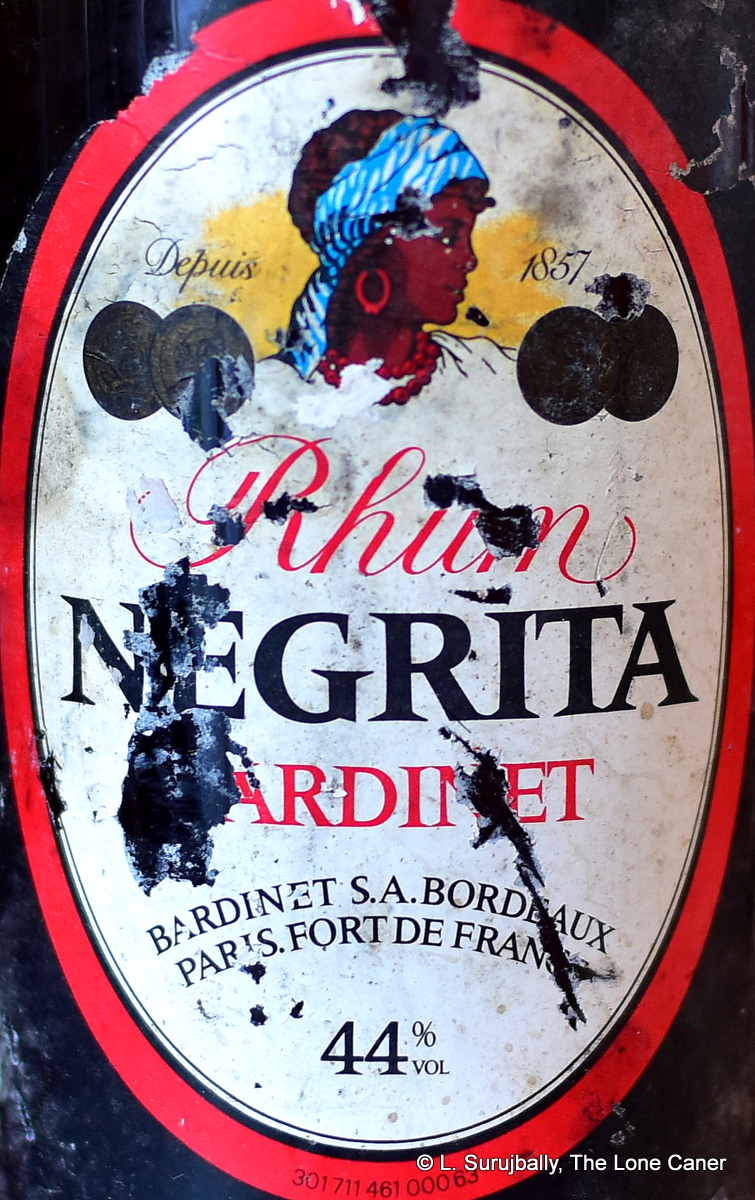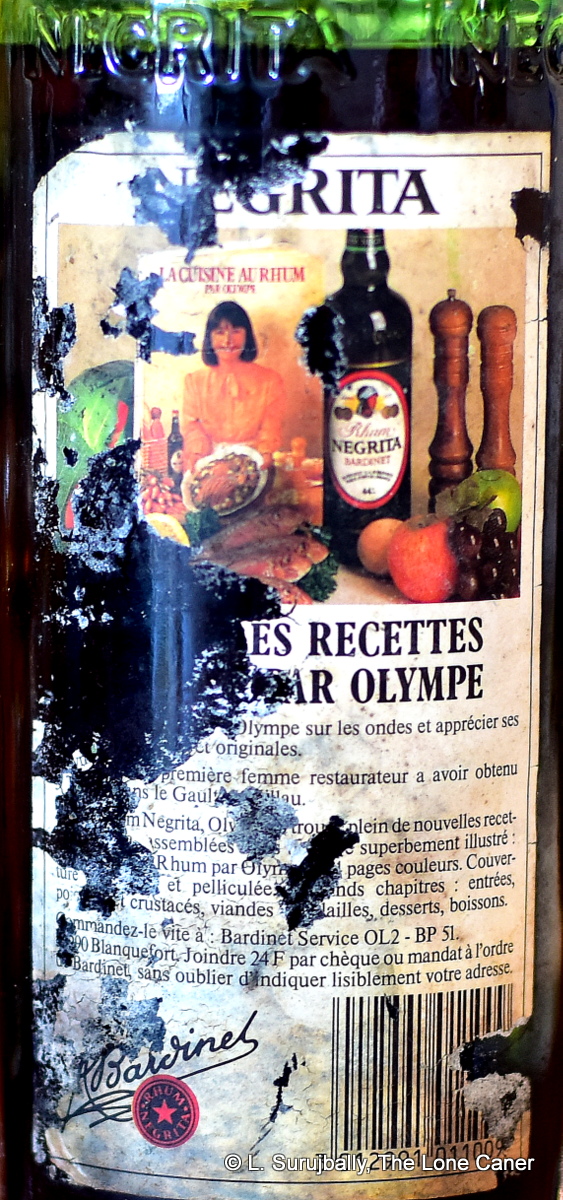
Rumaniacs Review #117 | 0742
Bardinet was a French company — now part of La Martiniquaise-Bardinet — formed by Paul Bardinet in 1857 in the south of France: he came up with the not-terribly-original idea of blending various rhums, much as various merchant bottlers were doing across the channel. Arguably their most famous product was the Negrita brand, originally a blend of Reunion, Martinique and Guadeloupe rhums, which was first released in 1886 with the now famous (or infamous) picture of the black girl on the label.

That picture, drawn by Max Camis (a famous poster designer and press cartoonist of the time) is supposedly the oldest character in French advertising…it’s surprising to see such consistent longevity, and one wonders if in these times it should not be retired. It has remained a visual staple of the Negrita brand for over a century, and maybe the brand owners feel it has created a heritage and cachet of its own that they are loath to change…but if 1423 be taken to task, and both they and Plantation can change names deemed culturally offensive, then surely this should be on someone’s list to speak to as well.
That polemic aside, one issue created by a label that has remained stable for so long, is difficulty in dating the bottle itself. The auction where it was sourced suggested a date of 1970s-1980s and the frayed and much decomposed back label seemed to refer to a person or place named Olympe, which, when I practiced my Google-fu, turned up a restaurant run by Olympe Versini, a starred chef who was the first woman to have a radio and TV show in France in the 1970s. Artur (see comments below this post) pointed out that not only were barcodes widely introduced in the 1980s but the referred to book on the label was published in 1981, so although originally I thought the 1970s were a good dating, the truth is that 1980s are probably correct. We do not, unfortunately, know about any ageing it has been through, or how old it is.
Colour – Dark amber
Strength – 44%
 Nose – Doesn’t lend itself to quick identification at all. It’s of course pre-AOC so who knows what made it up, and the blend is not disclosed, alas. So, it’s thick, fruity and has that taste of a dry dark-red wine. Some fruits – raisins and prunes and blackberries – brown sugar, molasses, caramel, and a sort of sly, subtle reek of gaminess winds its way around the back end. Which is intriguing but not entirely supportive of the other aspects of the smell.
Nose – Doesn’t lend itself to quick identification at all. It’s of course pre-AOC so who knows what made it up, and the blend is not disclosed, alas. So, it’s thick, fruity and has that taste of a dry dark-red wine. Some fruits – raisins and prunes and blackberries – brown sugar, molasses, caramel, and a sort of sly, subtle reek of gaminess winds its way around the back end. Which is intriguing but not entirely supportive of the other aspects of the smell.
Palate – Quite good, better, in fact, than the nose. Soft, smooth, warm, slightly sweet, with lots of ripe fruits – mangoes, papayas, a slice of pineapple, plums, blackberries, cherries. There’s a trace of coffee grounds, vanilla and a nice background tartness to the whole thing, a creamy citrus hint, that gives it an edge I like.
Finish – Short, warm, almost thick, smooth. Mostly fruits and a bit of toffee and the tiniest whiff of brine.
Thoughts – It’s not a bad rhum — indeed, it’s quite interesting — just one we don’t know enough about in terms of what went into its blend. I’d suggest both Martinique and Guadeloupe, though that’s guesswork based on a taste that could be interpreted in many other ways. Good for a sip and a share, however, for those who like sipping back into history.
(82/100)
Nice review. Agreed about the Label being outdated (name and picture).
I have a bottle from the 60s that I just opened last week to use in a Mai Tai for National Mai Tai Day (1:1 with a Myers’ Planter’s Punch). The nose and palate you describe is very similar to what I got, which tasted nothing like what we would consider an agricole today. It made me wonder if this is a blend of Grand Arômes?
Lance,
your bottle seems not to be from the 70s. Barcodes were introduced in large scale mid 1980’s.
Also the book advertised on the back is from 1981.
I would therefore suggest an early 80’s bottling to be found here.
Otherwise a really nice review. Tasting these french molasses Rhums is always fun and its hard to believe that the french just outright keep labels like this.
Thanks Artur….I did not find any reference to the book in my original scan, but I think when taken with the barcodes implementation dating, you are correct – and have changed the post to reflect that.